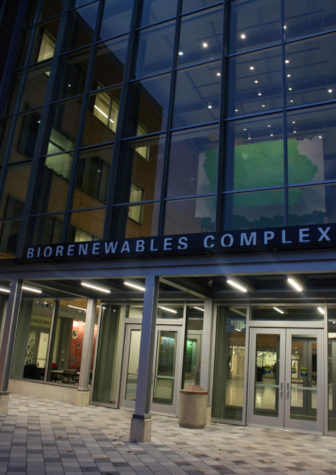Enviropig is environmentally friendly
September 21, 2012
When pigs on modern farms produce waste, they release phosphorus in the environment. With our centralized industrial agricultural system, there are occasionally huge amounts of phosphorus dumped into a small area. When this element is washed into rivers and other bodies of water, it can lead to steep increases in algae, which disrupts natural oxygen levels and can kill fish. In short, pig waste, a major fertilizer source for farmers, can be a problem for the environment.
A possible solution for this problem is the “enviropig.” Enviropigs are able to digest the plant phosphorus more efficiently, reducing the amount of phosphorus released into the air by up to 60 percent.
In 1999, the first enviropig was born at the University of Guelph’s farm in Ontario, Canada. Unlike the rest of his litter, this piglet had the phytase gene, a bacterial protein, attached to a piece of mouse DNA that locked into one of his chromosomes. The purpose of the gene was to make the pig produce an enzyme to help it better digest plant phosphorus, a vital nutrient in his feed. The mouse DNA was used as a catalyst to kick start phytase production in the pig’s salivary system.
In addition to enviropigs not damaging the environment, the genetic engineering does not harm the pigs in anyway. Such evaluations are required under the Food and Drug Administration’s draft guidelines.
For Cecil Forsberg, one of the University of Guelph scientists who developed the enviropig, the FDA draft guidelines open the door to corporate investors interested in their trademarked animal. “Food companies,” Forsberg said, “have been slow to back genetically engineered animals without a clear approval process.”
FDA officials say genetically-engineered animals hold “great promise” for improving human medicine and the environment.
Genetically modified food is already on your table. Corn, soy and rice have been genetically modified, and the practice is growing all over the world. Generally, the aim is to modify food so that it is pest and herbicide resistant, as well as bigger, juicier, tastier, etc. There have been some promising results.
Most countries have stalled in accepting genetically-engineered meat, however. Genetically engineered animals seem like a larger risk than plants. It’s unclear if or when the public will warm up to the idea of modified meat, but genetic engineering has far more applications than just dinner.
“[Genetically engineered animals] would offer some good possibilities to reduce phosphorus in the manure and reduce for potential water quality concerns. Testing and verification would be necessary to ensure that the pig does reduce the need for phosphorus in the diet, and that it can be raised under commercial conditions,” said Tom Baas, animal science professor at Iowa State University. “Unfortunately, in many cases, other production problems may arise, which is why evaluation and verification [are] necessary.”
Further studies have also shown that the engineered trait is also successfully passed down to offspring, meaning that a new breed of pig could make its appearance on farms.









